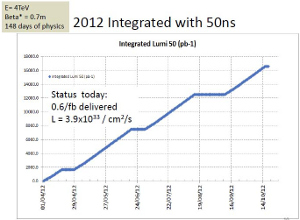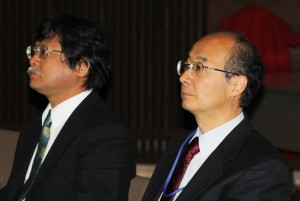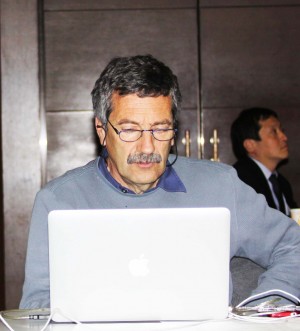The ILC initiative is unique in many ways, but perhaps the most striking characteristic is that it is truly a global effort having no home laboratory to support or guide its efforts. Instead, scientific guidance comes from the International Committee for Future Accelerators (ICFA), currently chaired by Pier Oddone, through its subcommittee, the International Linear Collider Steering Committee (ILCSC), chaired by Jon Bagger. Oversight and advice on project and funding for ILC comes through the Funding Agencies for Large Colliders (FALC), an informal group of particle physics funding agency representatives. FALC met in the Shonan Village Center in Kanagawa, Japan on 17 April, where they discussed the future of ILC R&D following the completion of the GDE mandate to produce a Technical Design Report.

The 2012 LHC run plan to acquire about 15 inverse femtobarns to be compared with the about 5 inverse femtobarns that have been acquired to date
FALC discusses large international projects in particle physics, both projects that are under way and those in the planning stages. It has given special attention to the ILC since it is a totally global initiative and has no home laboratory to oversee its development.
This FALC meeting began with a series of reports on large projects around the world. Of note was the report of Rolf Heuer giving an update of the status and plans for the LHC at CERN. He described the plans for the 2012 running, before the extended shutdown. He said the goal is to take enough data to enable the CMS and ATLAS experiments to independently discover the Higgs boson. If necessary, the run could be extended for up to two months to reach that goal. In addition, this year’s run will include a proton-lead ion run at the end of the year, as well as machine studies necessary to ensure that they will “allow high-energy, useful high-luminosity running” following the shutdown. This year’s run will have an increased energy from 3.5 teraelectronvolts (TeV) per beam to 4.0 TeV per beam, effectively giving a higher peak (integrated) luminosity of about 15%, a higher Higgs cross-section of about 20 to 30% and possibly allowing an improved β* (“beta star”) of 0.6 metres.
Fernando Ferroni, INFN and La Sapienza University, Rome, summarised the status and plans for the SuperB project in Italy. The laboratory for SuperB has been named “Laboratorio Nicola Cabibbo” (or Cabibbo-Lab). The present schedule is to complete site preparation and preliminary project definition by next October or November. The project team is effectively in place, the detector design is far along, and an updated budget and schedule are to be produced this summer. The design for including a photon science facility has been changed to making the injector also serve as an X-ray free-electron laser machine. A crucial step to final approval will be a schedule and cost review by the Italian Ministry of Science next autumn. If all falls into place, excavation could begin as early as summer 2013.
FALC spent considerable time discussing the proposed future of the ILC R&D programme following submission of the ILC Technical Design Report in June 2013. The plans as proposed by ICFA and the ILCSC were presented by Pier Oddone and Jon Bagger. FALC agreed to key points that will enable ICFA to move forward with the appointment of an overall Linear Collider Director and a plan for the continuation of a common fund as we have had for the Global Design Effort. A review of the use of the common fund by the GDE and the funding to complete our mandate will be carried out this fall, along with initial planning for a new common fund for the post-TDR organisation.




Recent Comments